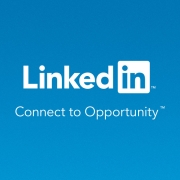How to fail successfully
The most innovative companies embed experimentation in their strategy and extract maximum learning from their mistakes.
JULIAN BIRKINSHAW AND KATHY BREWIS
27 MARCH 2020
Everything has shifted – and it continues to shift. Being able to adapt quickly could make the difference between staying afloat and foundering. Most fundamentally, says Julian Birkinshaw, Professor of Strategy and Entrepreneurship at London Business School, business leaders and managers should reevaluate and think afresh about risk, uncertainty and failure.
“Many organisations have highly structured ‘stage-gate’ processes for managing innovation, as a way of keeping things as orderly and predictable as possible,” he says. “But the reality is that innovation is messy and requires an acceptance of high failure rates. And never more so than in these unprecedented times.”
Many businesses will struggle to embrace this new reality. They might know in theory that failure is meant to be valued, but they’ve not quite put this into practice. Old habits die hard: bosses used to holding postmortems when projects or products fail are now going to need to focus on genuine learning.
“I have seen several companies adopt a zero-tolerance approach to failure,” says Professor Birkinshaw. “The person who failed gets fired, the failure gets swept under the carpet and everyone gets the message that this must not happen again. This creates a fear culture – people follow the rules, whether they make sense or not, and no-one dares try anything new. Not a recipe for success in this world where the context is changing daily.”
Experimentation takes courage
Fortunately, there are some lessons we can all learn from businesses that have taken learning from failure seriously. Tim Harford, author of Adapt, said there were three essential steps: try new things, in the expectation that some will fail; make failure survivable, because it will be common; and make sure that you know when you’ve failed.
Professor Birkinshaw advocates an essential strategic shift for business leaders: fail methodically, through robust experimentation – and learn to maximise your return on failure. This sounds like an excellent plan. So why don’t more people do it?
“When you actually take a business person with responsibilities and a budget and sit them down and say, why don’t you do this as an experiment? They’ll say, ‘No, that won’t work: let’s pilot it or do some more research’,” says Professor Birkinshaw. “Experimentation is beautiful in concept but it’s very difficult for people to have the guts to follow through. An experiment says, let’s run two different pilots. You have to admit that you don’t know the right way forward – and nobody likes to admit that.”
Rajesh Chandy, Professor of Marketing and Academic Director, Wheeler Institute for Business and Development at London Business School, has studied how innovative companies incorporate failure in their corporate culture. He says: “Innovative companies often have asymmetric incentives for enterprise. Enterprising employees in these companies understand that the rewards for success will be much higher than any punishment for failure.”
“It’s not the case that failure has no negative consequences in these companies,” he points out. “Those responsible for failure may get their wings clipped, or may face higher burdens of justification the next time they propose something. But the incentive structure is such that if they succeed, the rewards will be disproportionately higher than any negative consequences should they fail.”
“Moreover, innovative companies manage risk by having a diverse portfolio of innovation projects – some that are quite risky, and many others that are quite safe. They also look outside and capitalise on the risks that others are taking. By letting the ecosystem do some of the risk-taking, they reduce the risks to themselves.”
Professor Birkinshaw recommends drawing up a balance sheet to assess a project’s return on failure. On one side, consider your ‘assets’. These might include: What have you learned about your customers’ needs and preferences? Do you need to change any of your assumptions? What insights have you gained into future trends? What have you discovered about how you work as a team? On the other side, look at your ‘liabilities’: costs, both financial and less tangible costs such as damage to reputation or morale. Bottom line: What are the key insights and takeaways for your business?
Costas Markides, Professor of Strategy and Entrepreneurship at LBS, agrees that experiments are crucial in identifying which of your ideas will fly, especially if you’re trying (or indeed forced) to innovate in a company that’s resistant to your big ideas.
“How do you select the good ideas? Try them out. Get the data and then you can say, ‘Look, what do you think about it now?’ Design clever little experiments to try your ideas. Small-scale, low-cost experiments, that get results quickly.”
Great idea – now prove it
This is the tricky part. “You have to bring the learning into the workplace,” says Adam Kingl, an executive education programme director at London Business School. “Realigning our position on failure, risk and experimentation is key. Aim to build a capability throughout the whole organisation so that as many people as possible have a chance to spot and respond to what’s coming in the distance. Leadership is about enabling your team continually to respond, experiment and get in front. If you experiment, by definition you will be more agile.
“Aristotle said, if you want to be a braver person, find a brave person and imitate them. Just by imitating ‘brave’, you will automatically be braver. That’s what experiments are. They give you the opportunity to try or even just imitate ‘agility’. In so doing, you will be more agile in a year’s time. Why do you need to be agile? Because, as one CEO put it, business used to be like trying to spot trends and opportunities when you’re on a swing – you’re are always moving but you can still keep an eye out. Today, it’s like trying to do so while you’re on a rollercoaster. So you need to experiment to build your agility muscles.”
Here is a four-step risk-mitigation framework Professor Birkinshaw suggests you keep in mind when you’re designing experiments:
1. Make your hypotheses explicit – a good experiment is designed so that whatever the outcome, you’ve learned something new. It’s much better to be able to say your hypothesis wasn’t supported than to say the project failed.
2. Limit the scope of the experiment. In the world of IT, the ‘sandbox’ is the offline testing environment where you try out new code. The same concept applies in business more generally – try the experiment in a limited way and make sure to run the new in parallel with the old.
3. Start at home. You want to stay under the radar during the early days of your experiment, while you figure out if it’s really a good idea. So this means trying it out in your own department or business first, and using volunteers to help you. You don’t want to expose yourself to formal review until you’re well down the track.
4. Iterate. You never get everything right first time. So learn the power of iteration and continuous improvement. James Dyson famously tried more than 5,000 prototypes before his bagless vacuum cleaner worked. Hopefully you won’t need quite that many.
Ultimately, what’s required is a shift in mindset. Kingl carried out a survey asking more than 100 UK HR directors about their company’s reaction to failure. Answers ranged from “A: Anyone who fails is quickly fired” through “B: We never speak of it – it’s shameful”, “C: ‘Good’ failure is tolerated but not shared” and “D: Failure is shared to a point, but there’s a stigma” to, finally, “E: Failure is shared and even celebrated”. Only 3% of the HR directors said their company’s attitude was an E.
The attitude you want to emulate is that of Tom Watson, CEO of IBM, in the company’s 1960s and 70s heyday. When a top salesman lost US$5 million on a project, Watson didn’t fire him. “Why would l fire you?” he said. “I’ve just spent five million dollars on your education.”





